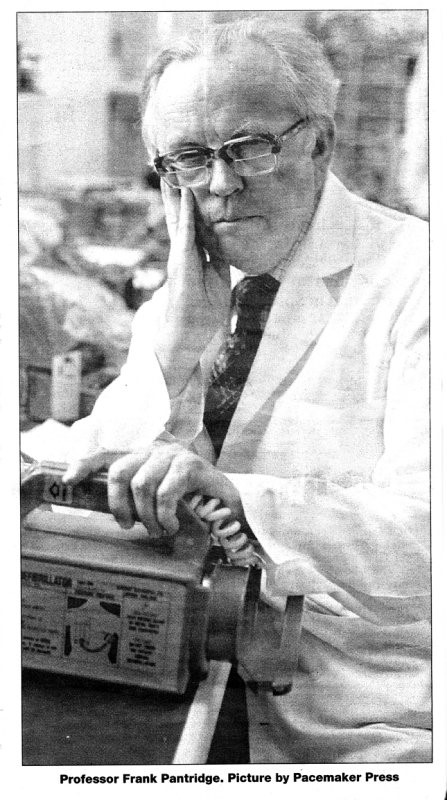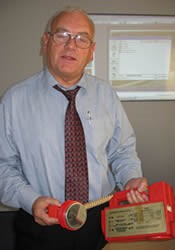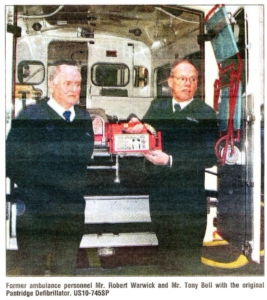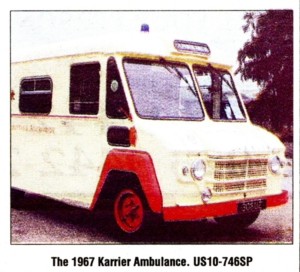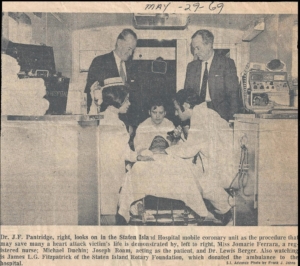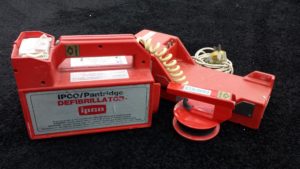Citation:
National EMS Museum People Files, NEMSM-0003 [Please include Folder/Person’s Name]
Dr. Frank Pantridge
1916-2004
Doctor James Pantridge was born in Hillsborough, County Down, Ireland, on October 3, 1916. His forebears were small landowners. He attended the Friends School, then Queen’s University. He graduated with a degree in medicine from Queen’s University in 1939. Dr. Pantridge became a Medical Officer with an infantry battalion after joining the army at the outbreak of the Second World War, and received an immediate award of the Military Cross for his work during the Battle of Singapore. He was captured when the city fell to the Japanese and spent much of his captivity on the Siam-Burma railway, including some months in the notorious “death camp”, Tanbaya,- an experience, which was to haunt him for the rest of his life. His interest in cardiology may have been initiated during this time when he survived the usually fatal cardiac beri-beri.
Dr. Pantridge returned to Belfast in 1945, but could obtain only an appointment as an adjunct lecturer in the Queen’s University Department of Pathology. He then obtained a scholarship to the University of Michigan where he worked with F. N. Wilson, the world authority on electrocardiology of the time. He returned to Belfast in 1950 and was appointed Physician at the Royal Victoria Hospital (RVH), where he remained until his retired in 1982, quickly establishing an internationally renowned cardiology unit. He received the Commander of the Most Excellent Order of the British Empire (CBE) appointment in 1978.
Submitted to NEMSM August 2011 by Mark Peck EMT-P and Cygnus/EMSWorld
PANTRIDGE 15-manufactured for Belfast by the Coleraine Instrument Company featured rechargeable ni-cad batteries which could deliver upwards of 70 shocks. weight 15 lbs.,
Dr. Pantridge is often referred to as the “Father of Emergency Medicine” or “Grandfather of Prehospital ALS”, and his plan was rapidly adopted in the USA and elsewhere. Hospital-based defibrillators were already being used in North America, but Pantridge doubted their impact, since data had shown that the majority of sudden cardiac arrests happened outside the hospital. It was known that most coronary deaths resulted from ventricular fibrillation (v-fib). He believed that immediate correction of v-fib could and should be done at the scene of the event. However, a major problem was that defibrillators of the time could only be operated using a main power supply. Using his research, he developed the first portable defibrillator: a svelte model that was powered by car batteries and weighed 70 kg.
With this new tool, the Belfast treatment system became adopted throughout the world. Pantridge believed defibrillators needed to be as prevalent as fire extinguishers, and that if non-physician responders could do CPR, then they could use defibrillators. To make the devices safer, Pantridge and his colleagues worked to improve the design, and, after harnessing a miniature capacitor manufactured for NASA, he was able to create a defibrillator weighing only 3 kg. Pantridge’s portable defibrillator would become a key tool in EMS, and, after further refinement, it has become the automated external defibrillator (AED), the cornerstone of response to cardiac arrests.
A 1967 editorial in the medical journal ‘The Lancet’ stated that Dr. Pantridge and his colleague at the RVH, John Geddes had revolutionised emergency medicine. However, it was not until 1990, almost 25 years after he installed the first defibrillator in a Belfast ambulance that Secretary of State for Health Kenneth Clarke announced £38 million was to be made available to equip all frontline ambulances in England with the equipment.

